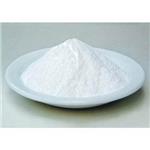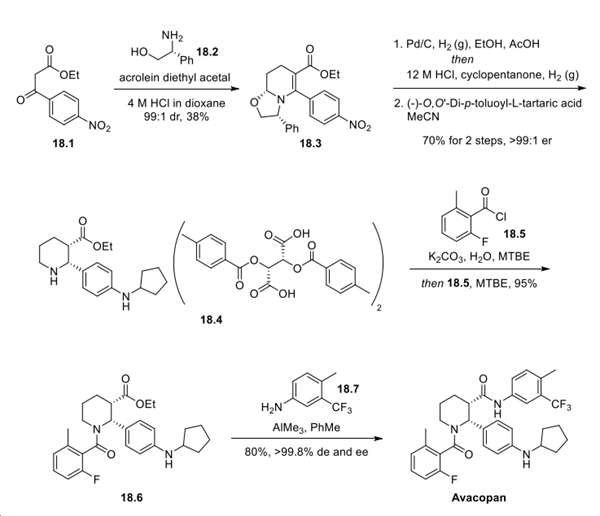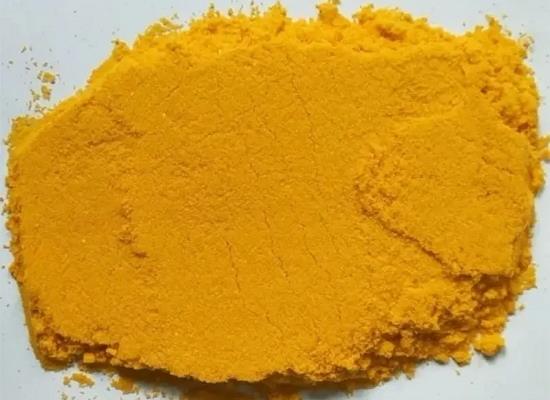Glucose oxidase: a versatile enzyme with applications in food, textile, and biofuel industries
General Description
Glucose oxidase is a versatile enzyme that plays a critical role in various industries. In the food industry, it acts as an antioxidant, preservative, and stabilizer, enhancing product quality and extending shelf life. In the textile industry, biological bleaching with Glucose oxidase offers a safer, more efficient, and cost-effective alternative to traditional chemical processes. Glucose oxidase also shows great potential in improving biofuel production, particularly in enzymatic glucose biofuel cells. However, its potential to produce harmful hydrogen peroxide can be overcome by employing a bienzymatic catalyst system with horseradish peroxidase. Overall, Glucose oxidase holds promise in various applications, offering numerous benefits such as improved efficiency, reduced energy expenditure, and lower environmental impact.

Figure 1. Glucose oxidase
Food industries
Glucose oxidase plays a crucial role in the food industry due to its various beneficial properties. It is widely used as an antioxidant, preservative, and stabilizer in food products. Glucose oxidase has several applications in this industry. Firstly, it is used in baking products to produce bread with enhanced volume. Glucose oxidase acts as an efficient oxidant, aiding in the production of high-volume bread. Secondly, Glucose oxidase is involved in the production of glucose-free dry egg powder. By utilizing Glucose oxidase, manufacturers can remove glucose from egg powder, increasing its shelf life and reducing the risk of spoilage. Furthermore, Glucose oxidase is utilized in textile bleaching and milk processing. It helps produce hydrogen peroxide (H2O2) and gluconic acid, which are essential components in these processes. Additionally, Glucose oxidase serves as an antioxidant and preservative in various food items. Its ability to remove glucose increases the shelf life and microbial tolerance of different foodstuffs. To enhance antimicrobial properties, Glucose oxidase can be combined with lactoperoxidase, which belongs to the innate immune system and can be found in mammalian secretions like saliva and breast milk. Overall, Glucose oxidase plays a vital role in the food industry by improving product quality, extending shelf life, and enhancing antimicrobial properties in various food products. 1
Textile industries
Glucose oxidase is increasingly being used in the textile industry as a safer alternative to chemical bleaching processes. Biological bleaching with Glucose oxidase offers numerous advantages over traditional chemical processes, including increased efficiency, reduced energy expenditure, and lower environmental impact. With chemical bleaching, alkaline pH conditions and high temperatures are required to achieve effective results. In contrast, biological bleaching with Glucose oxidase can be performed at lower temperatures and pH levels, resulting in reduced energy costs and a more cost-effective process. Glucose oxidase generates hydrogen peroxide (H2O2) and gluconic acid, which can chelate metal ions and aid in the bleaching process. Glucose oxidase not only reduces the time of reactions but also improves dye removal efficiency, product quality, and process integration. The use of H2O2 in cotton bleaching can cause fiber destruction due to radical reactions, especially in the presence of metal ions. However, Glucose oxidase generates H2O2 in a medium with pH 4.5–7 and lower temperatures, preventing enzyme inactivation, and protecting fibers against destructive effects. Moreover, Glucose oxidase has been shown to have a positive impact on effluent treatment in textiles. In combination with glucose and manganese sulfate (MnSO4), Glucose oxidase demonstrated more reliable decolorizing performance than when used alone. In conclusion, Glucose oxidase is an efficient, nontoxic, and ecological alternative to traditional chemical bleaching processes in the textile industry. Its benefits include reduced energy expenditure, improved product quality, and lower environmental impact. 2
Use in improving biofuel production
Glucose oxidase is an enzyme that has shown great potential in improving biofuel production, particularly in enzymatic glucose biofuel cells. These cells are considered alternative energy sources due to their ability to convert the chemical energy of glucose into electricity. Glucose oxidase play a crucial role in accelerating the production and transmission of electrons between the substrate and electrodes, making them ideal enzymatic ingredients for developing biofuel cells. One of the major advantages of using Glucose oxidase is its stability and relatively high biological activity, making it a cost-effective option. Additionally, Glucose oxidase utilizes glucose as its substrate, which is readily available, abundant, and provides a safe and clean energy source. This makes glucose an ideal fuel source for GOXs. However, one drawback of Glucose oxidase is their potential to produce harmful hydrogen peroxide (H2O2), which can inhibit Glucose oxidase activity and cause cellular injuries when used in biofuel cells located inside the body. To overcome this issue, a bienzymatic catalyst system has been employed, with horseradish peroxidase (HRP) acting as a suitable partner for GOX. HRP can catalyze the breakdown of toxic H2O2 into water and oxygen, effectively eliminating the inactivation problems associated with Glucose oxidase. In conclusion, the use of Glucose oxidase, in combination with HRP, holds promise in improving biofuel production by enhancing the performance and stability of enzymatic biofuel cells. It also has potential applications in implantable devices, such as therapeutic and diagnostic bioelectronics instrumentations, providing a reliable and sustainable energy source for these devices. 3
Reference
1. Ozyilmaz G. Glucose oxidase applications and comparison of the activity assays. Nat Eng Sci. 2019; 4: 247-261.
2. Wong CM, Wong KH, Chen XD. Glucose oxidase: natural occurrence, function, properties and industrial applications. Appl Microbiol Biotechnol. 2008; 78(6): 927-938.
3. Chung Y, Tannia DC, Kwon Y. Glucose biofuel cells using bi-enzyme catalysts including glucose oxidase, horseradish peroxidase and terephthalaldehyde crosslinker. Chem Eng J. 2018; 334: 1085-1092.
);You may like
Related articles And Qustion
See also
Lastest Price from Glucose oxidase manufacturers

US $10.00/kg2024-04-27
- CAS:
- 9001-37-0
- Min. Order:
- 1kg
- Purity:
- 99.7%
- Supply Ability:
- 200000kg

US $0.00-0.00/kg2024-04-26
- CAS:
- 9001-37-0
- Min. Order:
- 0.10000000149011612kg
- Purity:
- ≥99%
- Supply Ability:
- 20tons



